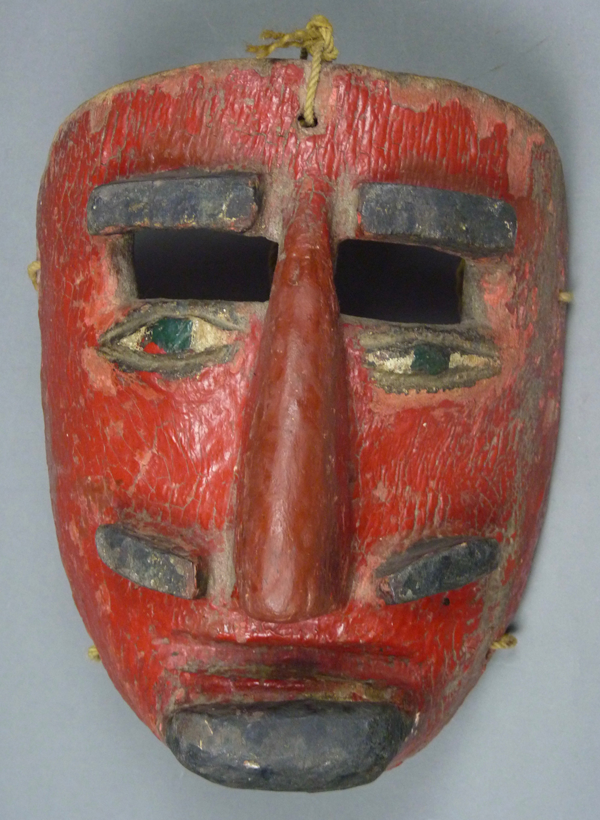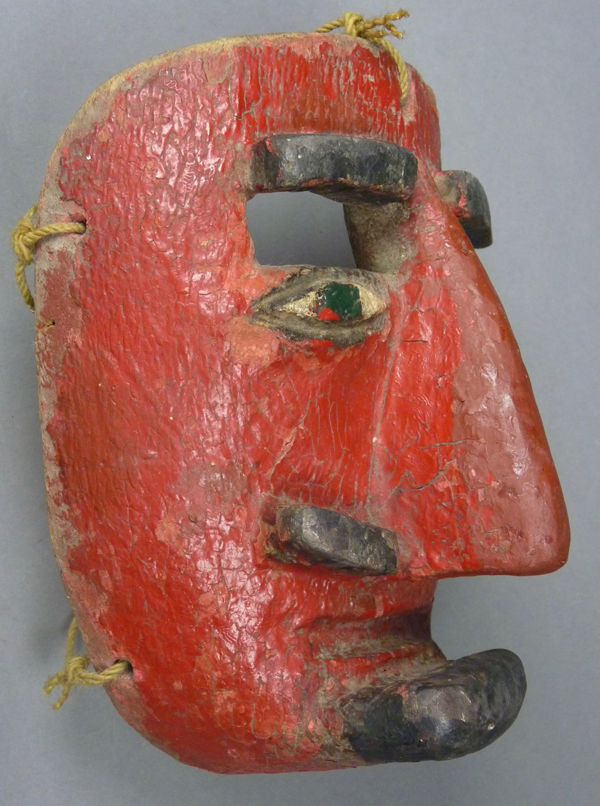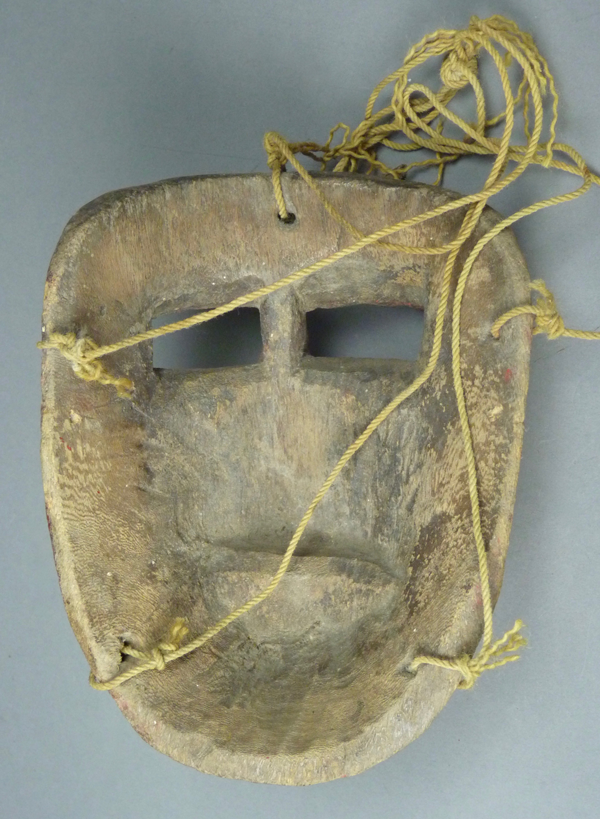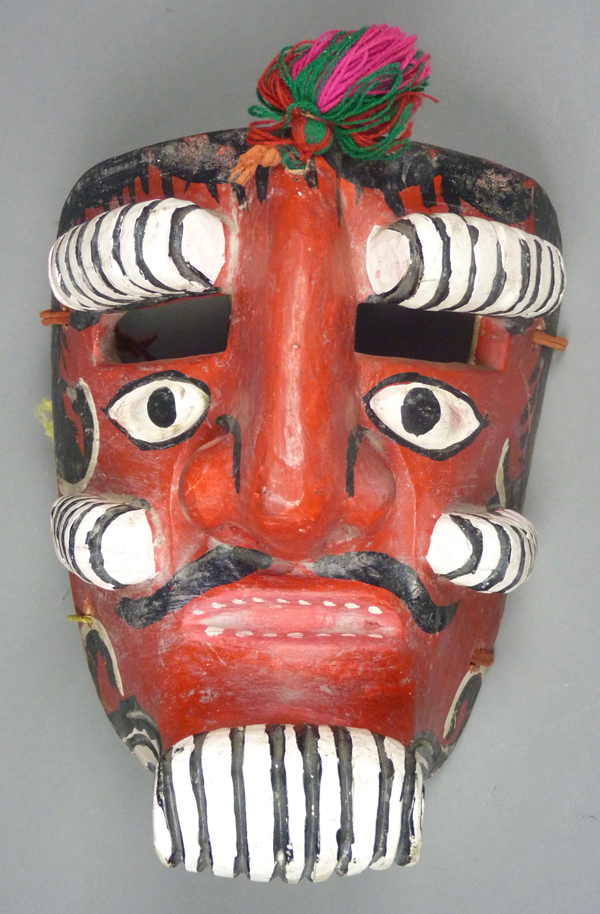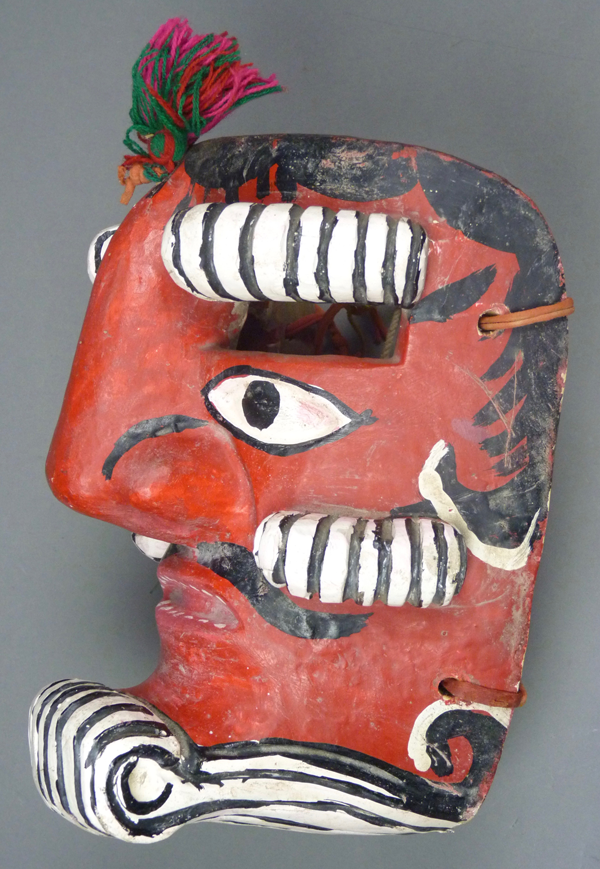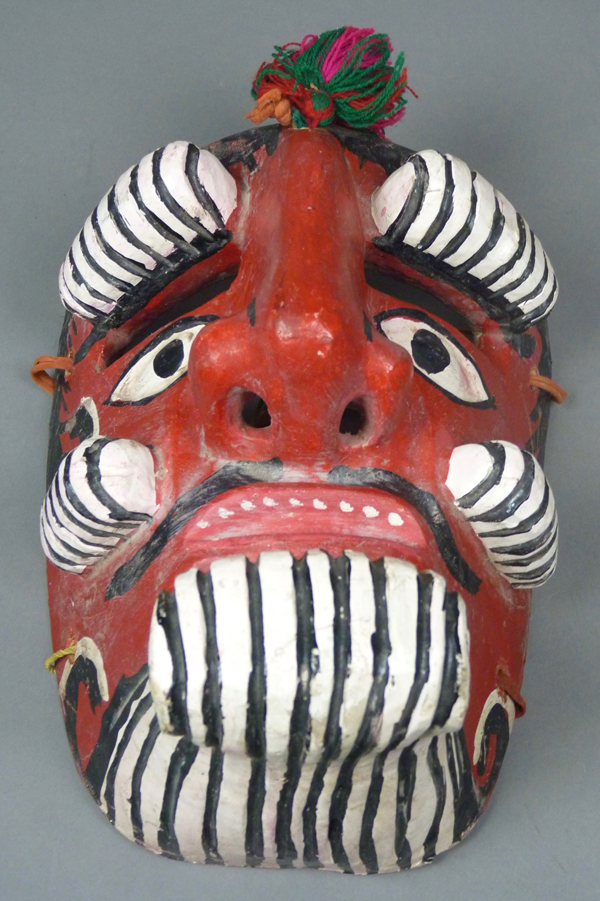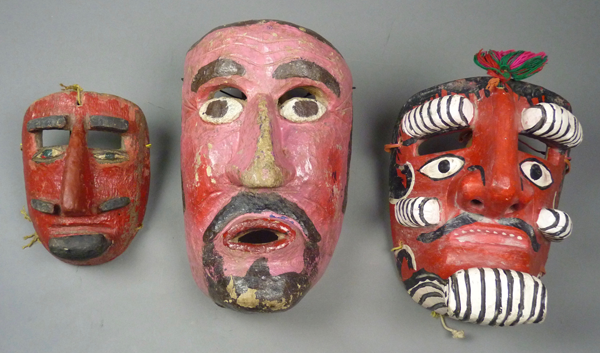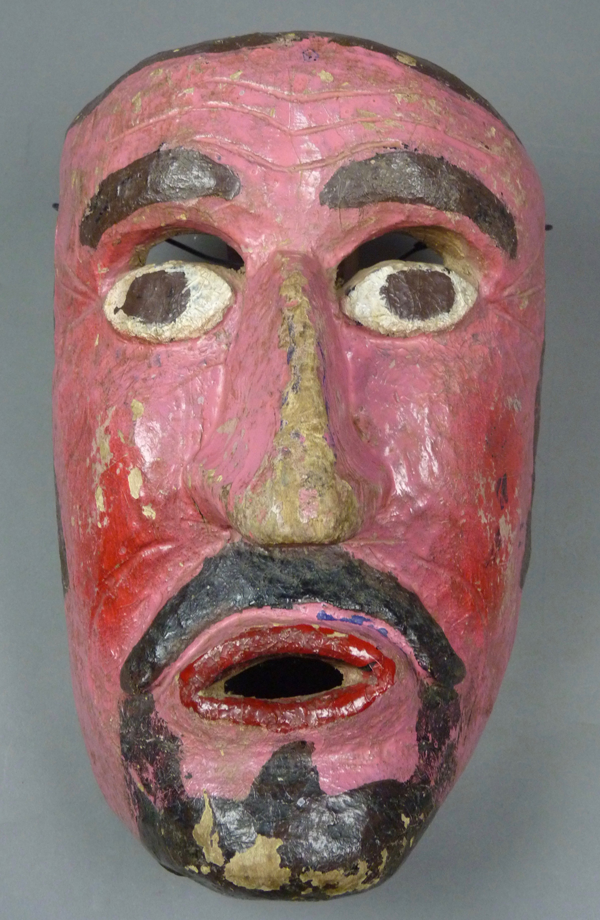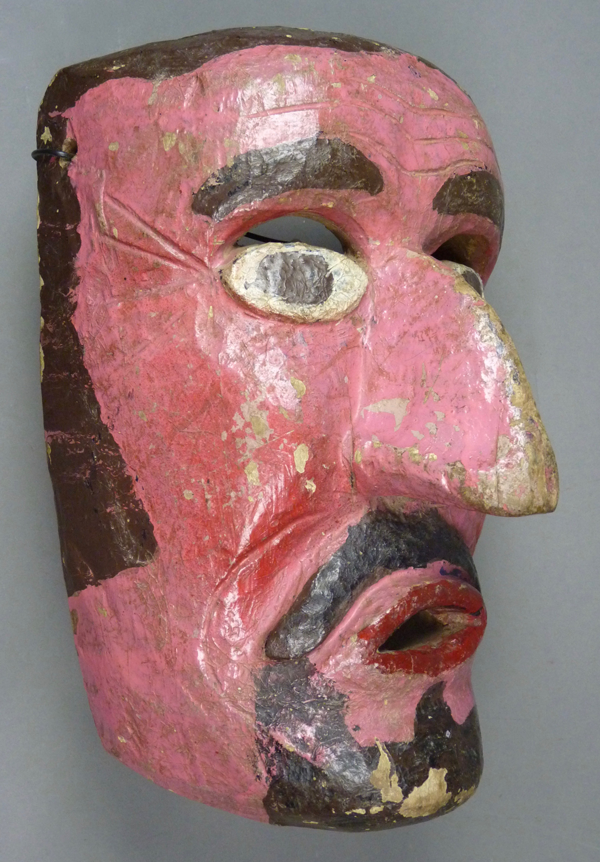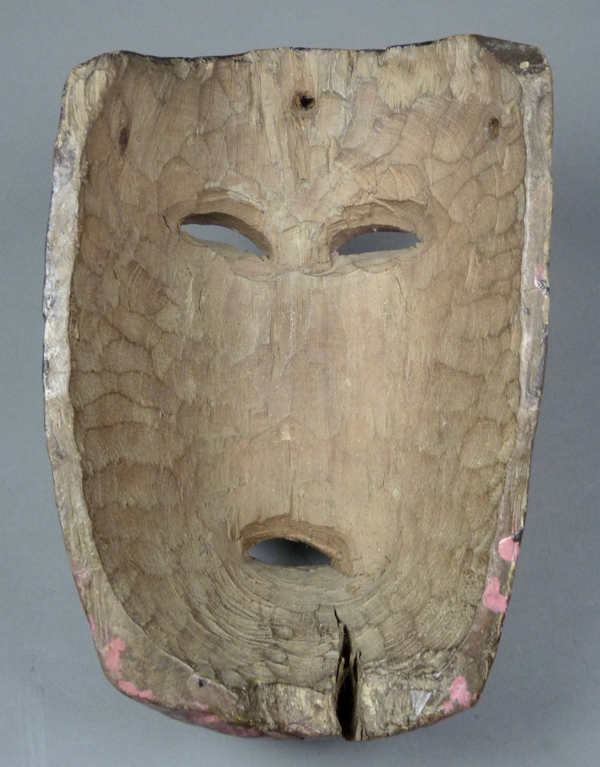In Changing Faces: Mexican Masks in Transition, an important reference from 1985 that was edited by Lori Jacobson and Donald E. Fritz, I saw my first Moros Chinos (Chinese Moors or Curly Headed Moors) masks on pages 21-24 (plates 2, 3, 4, 5, 6, and 7). There was great variety among these six masks, but just one of them (#4) was seen by the editors and their panel of experts as possibly decorative: the rest appeared to be authentic. There was also a dance photo with two Moros Chinos dancers wearing such masks in Mochitlán, Guerrero, on page 10. I was immediately fascinated by these masks, because some had eyebrows, mustaches, and beards that were rectangular in shape, as if geometric or cubist. I had obtained the book in the fall of 1987 and I immediately spotted certain masks, such as the Moros Chinos, that I hoped to find someday. In fact it took me 10 years to even find one of this type that I liked.
Here is a good dance photo from Mochitlán, Guerrero. I didn’t find a corresponding video.
I purchased this rather diminutive Moro Chino mask from Jaled Muyaes and Estela Ogazón in July of 1997. The town of origin was not documented. The six masks in the Changing Faces book were all about 8 to 10 inches tall and about 5 or 6 inches wide while this one is just 6¾ inches in height, 5¼ inches wide, and 3½ inches in overall depth, as if it was made to be worn by a child. In sharp contrast to these dimensions, there are two Moros Chinos masks in Donald Cordry’s book (page 37, plate 42) that are 38 cm tall (about 15 inches). I have always regarded those as decorative, not only because of the size, but also because they don’t even appear to have vision openings that would allow the wearer to see.
This is a classic Moros Chinos mask in the geometric style, and it is obviously old and worn. I really like this mask!
For instance I like the small turned up goatee.
The back is heavily stained from use.
I purchased my other Moro Chino mask from Jaled Muyaes and Estela Ogazón in March, 2001. In sharp contrast to the first, this one is 8¾ inches tall, 7¼ inches wide, and 5½ inches deep, dimensions that are consistent with the Moros Chinos masks in Changing Faces. As a matter of fact, this mask is similar in design and dimensions to two of the Changing Faces masks, #6 and #7 (page 24).
In this variation, the eyebrows, mustaches, and beards are more tubular, even worm-like, rather than geometric.
The goatee ends with a scroll. There are painted teeth.
The lines on the facial hair are heavily inscribed, just as one finds on one of those in Changing Faces (#6), while they are merely painted on another (#7).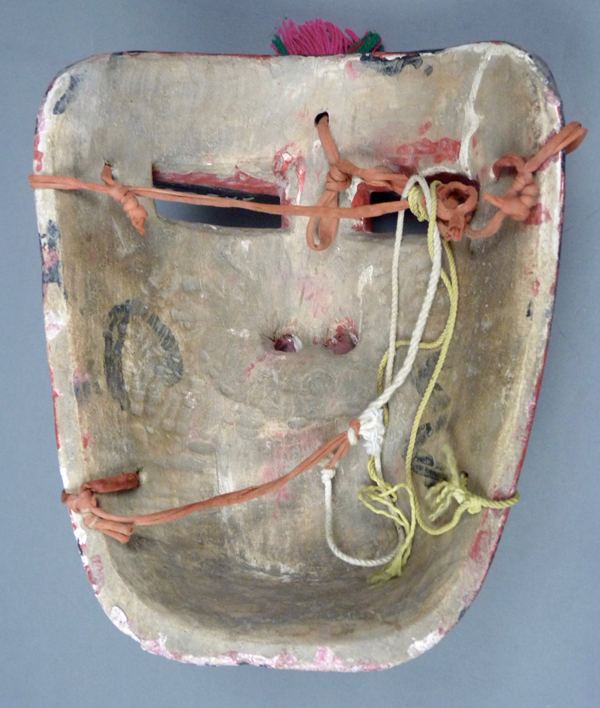
This back too is heavily stained from use.
The final mask in today’s post, which is obviously not a Moro Chino, is the one in the center of this comparison photo. It is even larger.
I bought this one from Robin and Barbara Cleaver in 2005. It had been collected with little documentation, and Robin speculated that it might be a Moor from the Mexican state of Veracruz. Its style does suggest that possibility, and its expression does look like that of a Moor. Its large size tempted me to compare it to similarly sized Moors from Guerrero or Puebla; it is 11 inches tall (28 cm), 7 inches wide, and 5½ inches deep. In any event, its size marks it as a Moorish leader such as Pilato. I looked through a favorite reference, the Museo Nacional de la Máscara Catálogo, for similar masks and found three—#66 Tiberius/Moros y Cristianos dance, Totoltepec Guerrero, 22.5 cm tall (page 38); #269 19th c, Moros y Cristianos dance, Puebla, 27 cm tall (page 83); and #357, Moros y Cristianos dance, Guerrero, 22.5 cm tall (page 105). Of these three, my mask most closely resembles #357 in appearance. Next week I am moving on to Moro masks from Puebla, so this mask can serve as a bridge, whether from one state or the other.
This mask was carved from a dense hardwood, which makes me think of Puebla. I particularly like the polished worn surface of the nose, and the Moor’s unhappy mouth.
These triangular designs at the sides of the eyes can be seen in various states, but in all these cases the masks were never this large. The more I look at it, the overriding impression is that this mask was worn by a powerful Moor such as Pilato or Tiberio, a “big wheel.”
I also like the back of this mask, so old and worn.
Next week’s post will less ambivalently open the subject of Moro masks from the Mexican state of Puebla.
Bryan Stevens

